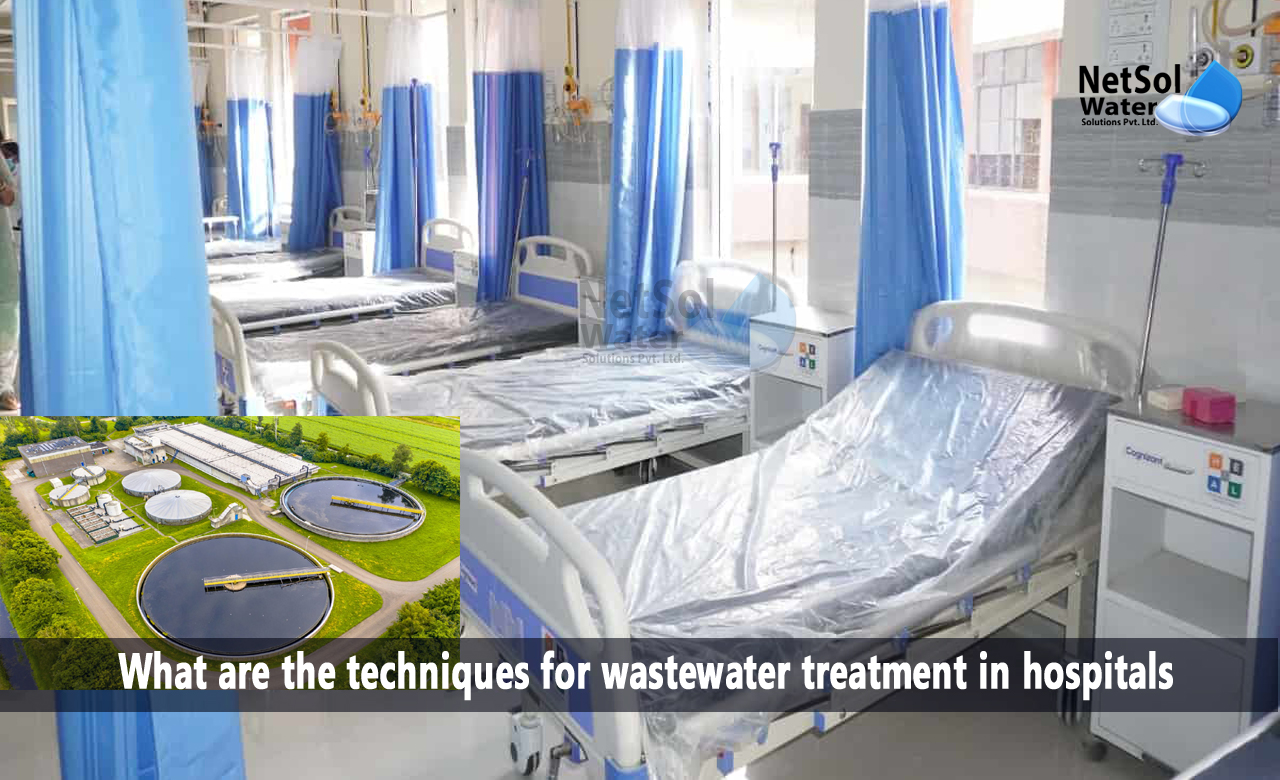What are the techniques for wastewater treatment in hospitals?
Depending on the activities occurring in the hospital's patient wards, surgical rooms, clinical wards, intensive care units, kitchens, and laundries, the contaminated water's composition varies.
Hospital wastewater must be treated before being dumped into the sewer, because it contains a variety of substances, including pharmaceuticals, radionuclides, medicinal drugs, heavy metals, radioactive elements, antibiotics, antiseptics, surfactants, solvents, and possibly pathogenic and drug-resistant microbes.
Let’s understand what are the techniques for wastewater treatment in hospitals!
· Reverse Osmosis
RO is a pressure-driven technology that eliminates dissolved solids and minute particles from hospital wastewater, permitting only water molecules to pass through it. The pressure fed to the RO system must be sufficient for water, to be able to overcome the osmotic pressure.
Since, RO membranes can successfully remove all particles, germs, and organics and have pores that are significantly smaller than UF membranes, they require less maintenance.
· Nanofiltration (NF)
NF can function at pressures lower than RO because it is capable of eliminating ions from hospital wastewater, which significantly raise osmotic pressure. As membranes are sensitive to free chlorine, NF cannot be used in some very polluted waters, without pre-treatment.
· Electrolysis
Electrolysis is the advanced technique to treat wastewater generated in hospitals, as the disintegration of a substance happens during electrolysis.
The complex is frequently divided into its component pieces. An electric current can be used to initiate a chemical reaction, by traveling through a substance or combination of components, often in liquid form.
· Aeration
Hospital wastewater treatment's main objective is to break down organic matter, by fostering and accelerating microorganisms' normal metabolic processes. It all begins in the aeration tank.
Aeration air is forced into the aeration tank or basin to encourage the conversion of NH3 to NO3 and, to provide oxygen for bacteria to continue to reproduce and thrive.
The bacteria strip/remove the oxygen molecules after the nitrate molecules have been converted to NO3, releasing the nitrogen (N) as N2 (nitrogen gas).
Also, pumping oxygen into the tank is the main function of the aeration tank, in order to encourage the breakdown of any organic material and to give the process enough time. During this phase, the ideal conditions are produced to encourage bacterial growth.
Biological techniques for wastewater treatment in hospitals
For the treatment of hospital wastewater, a variety of technologies have been used, including biological approaches like:
· Activated sludge process (ASP): Over the world, there has been widespread use of ASP for HWW remediation. For TSS, COD, and TN, the system offers elimination percentages of around 100%, 93%, and 91%, respectively.
· Membrane bioreactor (MBR): The MBR method combines membrane-based solid-liquid separation by microfiltration or ultrafiltration, with biological treatment procedures. Because, of their effectiveness and small environmental footprint, they have recently attracted a lot of interest.
More than 98% COD, 99% ammonia, and 82% TN are removed from hospital wastewater using MBR-based treatment. Moreover, the method is able to get rid of 78–82% of the PhACs.
· Moving bed bioreactor (MBBR): The MBBR process uses microorganisms that are present in both suspended and attached situations, to biologically treat wastewater.
More than 95% of the COD and BOD in wastewater may be efficiently reduced, by this treatment unit. It is clear that MBBR can remove BOD, COD, and ammonia with effectiveness.
· Constructed wetlands (CWs): CWs are quickly becoming more and more popular in the wastewater treatment industry, because of its adaptability and durability.
A number of removal methods, including phytoremediation, filtration, microbial degradation, adsorption, etc. occur simultaneously in CWs, making them a viable choice for managing HWW. BOD, COD, etc. are effectively removed, but refractory organic pollutants can also be degraded by CWs.
Conclusion
Hospital wastewater is contaminated with pathogens, radionuclides, chemicals, drug remnants, and other harmful substances. Some hazardous compounds discovered in hospital wastewater (HWWs) resemble domestic sewage, even though some of them may have regulatory status and should be managed accordingly.
Hospitals can work with a wastewater technology expert like Netsol Water Solutions, to create a unique solution that includes guidance, wastewater treatment system design, installation, testing, and maintenance, to ensure a steady supply of compliant, clean water.
Contact Netsol Water experts at +91 9650608473 or enquiry@netsolwater.com for further information



